
Discover the Haunting History at Seodaemun Prison History Hall
Explore Korea's dark past at Seodaemun Prison History Hall, a poignant museum reflecting on the struggle for independence and human rights.
Seodaemun Prison History Hall is a significant historical site that offers tourists a glimpse into Korea's turbulent past. The former prison, now a museum, provides an immersive experience through its exhibits that detail the struggles for independence and human rights. Explore the chilling cells and the stories of the prisoners who fought for their nation.
A brief summary to Seodaemun Prison History Hall
- 251 Tongil-ro, Seodaemun-gu, Seoul, 120-080, KR
- +822-363-9750
- Visit website
- Tuesday 9:30 am-6 pm
- Wednesday 9:30 am-6 pm
- Thursday 9:30 am-6 pm
- Friday 9:30 am-6 pm
- Saturday 9:30 am-6 pm
- Sunday 9:30 am-6 pm
Local tips
- Visit during weekdays to avoid crowds for a more intimate experience.
- Check for guided tours which provide deeper insights into the history.
- Allocate at least two hours to fully explore the exhibits and prison grounds.
- Bring a camera, but be respectful of the site's somber history when taking photos.
Getting There
-
Subway
If you are near a subway station, take Line 3 (Orange Line) and head towards the 'Daehwa' direction. Get off at 'Gyeongbokgung Station' (Exit 5). From the station, walk straight for about 10 minutes towards 'Seodaemun Prison History Hall'. You will pass by the National Museum of Modern and Contemporary Art on your right. Continue straight until you reach the intersection, then turn left onto Tongil-ro. The entrance to Seodaemun Prison History Hall will be on your right.
-
Bus
To reach Seodaemun Prison History Hall by bus, board any bus heading towards 'Seodaemun-gu'. You can take bus numbers 7011, 171, or 272. Get off at 'Seodaemun Prison History Hall' bus stop. The museum entrance is directly across the street from the bus stop. Follow the signs to the entrance.
-
Walking
If you are in the vicinity of Seodaemun, you can simply walk to Seodaemun Prison History Hall. The address is 251 Tongil-ro, Seodaemun-gu. Look for the large building with a distinct prison architecture. It's located near the intersection of Tongil-ro and the street leading to the National Museum of Modern and Contemporary Art.
Discover more about Seodaemun Prison History Hall
Iconic landmarks you can’t miss
Seoul Hanyangdoseong Fortress
0.9 km
Discover the historic Seoul Hanyangdoseong Fortress, where Korea's past meets stunning views in the heart of Seoul.
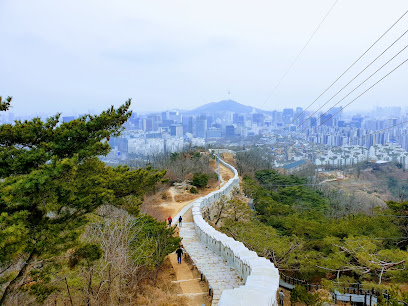
Road of Emperor Gojong
1.6 km
Explore Seoul's Road of Emperor Gojong, a historic pathway that beautifully blends the past with the present amidst stunning architecture and lush gardens.
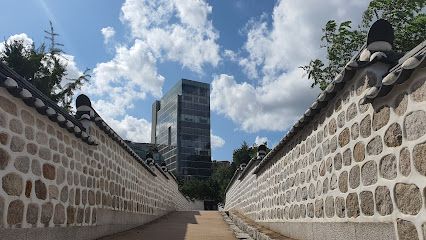
Yeongchumun (West Gate)
1.7 km
Discover the historical grandeur of Yeongchumun, the West Gate of Gyeongbokgung Palace, a must-see landmark in Seoul's rich cultural tapestry.
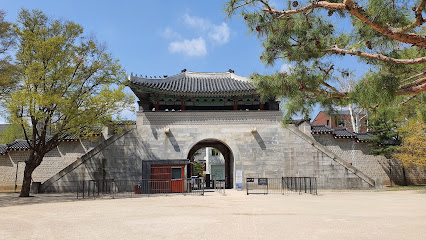
National Palace Museum of Korea
1.7 km
Discover the captivating legacy of Korea's royal past at the National Palace Museum, a cultural gem in Seoul featuring exquisite artifacts and engaging exhibits.

Deoksugung Palace Jungmyeongjeon
1.7 km
Uncover the historical splendor of Deoksugung Palace Jungmyeongjeon, a captivating blend of Korean tradition and Western architecture in Seoul.
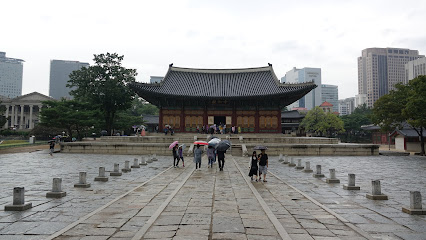
Chungdong First Methodist Church, English Ministry
1.8 km
Explore the spiritual and architectural beauty of Chungdong First Methodist Church in Seoul's Jung District, a serene escape in a bustling city.
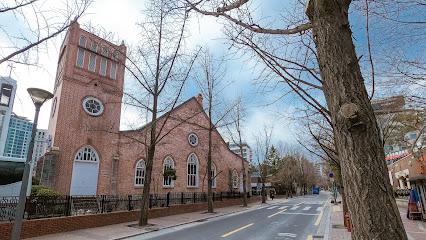
Seokjojeon (Korean Empire History Museum)
1.8 km
Explore the stunning architecture and rich history of Seokjojeon, a captivating museum dedicated to the Korean Empire's heritage in Seoul.
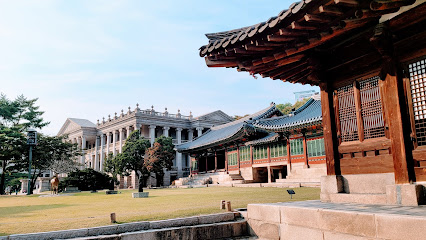
Gwanghwamun Gate
1.8 km
Explore Gwanghwamun Gate, a historic entrance to Gyeongbokgung Palace, showcasing the architectural beauty and cultural significance of Seoul.

Statue of King Sejong the Great
1.8 km
Discover the legacy of King Sejong the Great at his majestic statue in the heart of Seoul, a cultural landmark celebrating Korea's rich heritage.
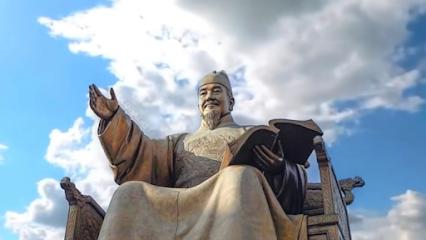
Gwanghwamun Square
1.8 km
Explore Gwanghwamun Square, a historical landmark in Seoul that beautifully merges Korea's past with its vibrant present.

Heungnyemun Gate
1.9 km
Explore Heungnyemun Gate, a beautiful historical landmark in Seoul, and immerse yourself in the rich heritage of Korea's Joseon Dynasty.
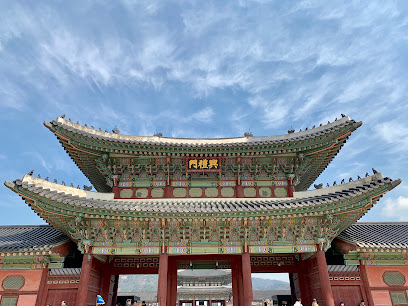
Statue of Admiral Yi Sun-sin
1.9 km
Explore the rich history and cultural significance of the Statue of Admiral Yi Sun-sin, a must-visit landmark in Seoul, South Korea.
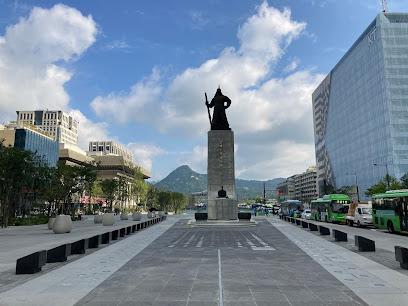
Geunjeongjeon
1.9 km
Discover the elegance of Geunjeongjeon, a cultural landmark in Seoul's Gyeongbokgung Palace, showcasing Korea's royal history and architectural beauty.
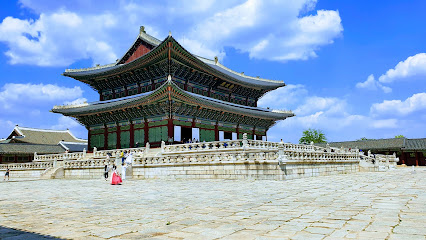
Seosomun History Park
1.9 km
Discover the serene beauty and rich history of Seosomun History Park, a peaceful retreat in the bustling heart of Seoul.
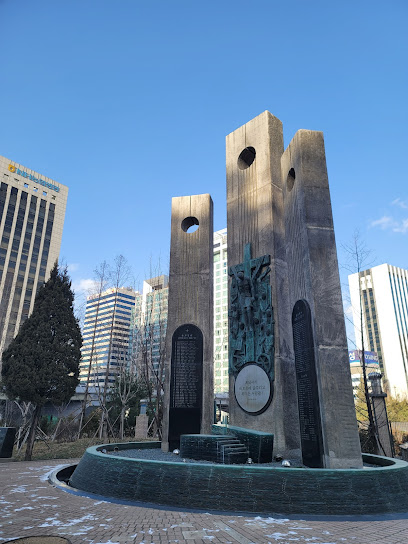
Deoksugung Palace
1.9 km
Experience the rich history and stunning architecture of Deoksugung Palace in Seoul, a cultural gem blending tradition and beauty.
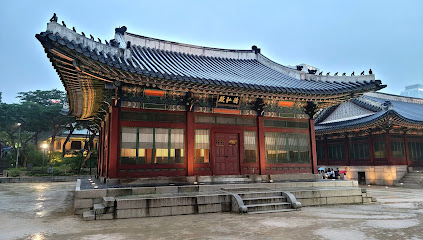
Unmissable attractions to see
Seodaemun Independence Park
0.1 km
Explore Seodaemun Independence Park, a serene memorial park in Seoul that celebrates Korea's journey to freedom with beautiful landscapes and historical significance.
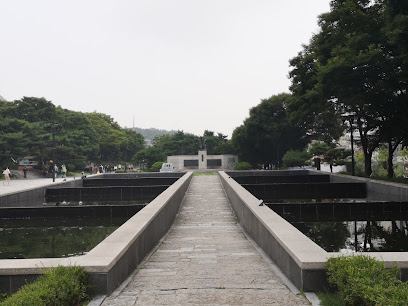
Dongnimmun Arch (Independence Gate)
0.4 km
Discover the historical significance and architectural beauty of Dongnimmun Arch, an iconic symbol of Korea's struggle for independence.
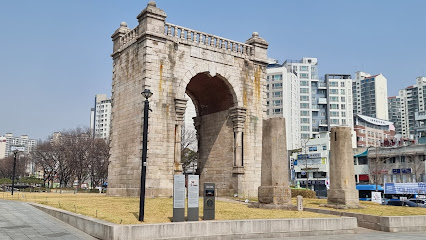
Inwangsan Mountain Park entrance (near Inwangsan IPARK)
0.4 km
Explore Inwangsan Mountain Park: A Scenic Hiking Oasis in the Heart of Seoul with Stunning Views and Rich Cultural Heritage.
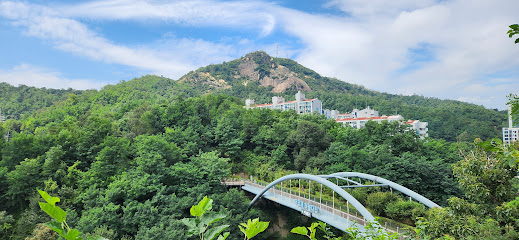
Inwangjeong
0.5 km
Explore the picturesque Inwangjeong in Seoul, a scenic spot blending natural beauty and rich cultural heritage.
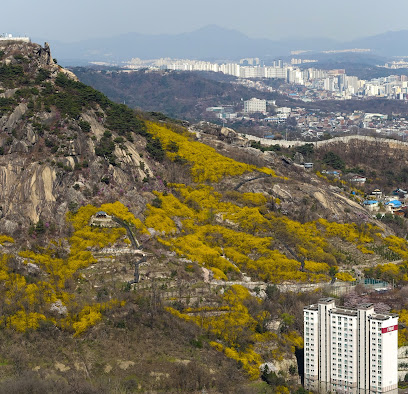
Inwangsa
0.6 km
Discover tranquility at Inwangsa, a serene Buddhist temple in Seoul that harmonizes nature and spirituality amidst the urban landscape.
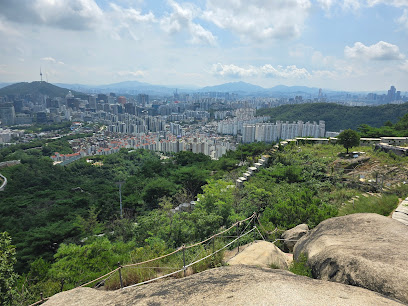
Yeongcheon Traditional Market
0.6 km
Explore Yeongcheon Traditional Market for an authentic Korean experience filled with local delicacies, vibrant culture, and unique shopping opportunities.
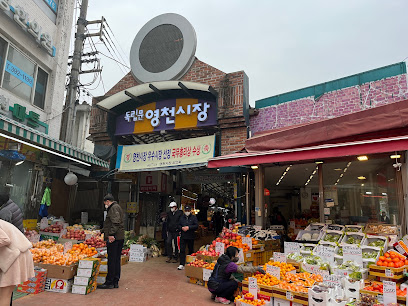
Inwangsan (Hanyangdoseong Fortress) Walking Trail Entrance
0.7 km
Discover the breathtaking views and rich history of Inwangsan Walking Trail, an essential stop for nature lovers and history enthusiasts in Seoul.
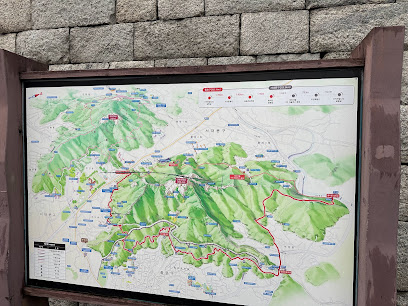
Inwangsan Mountain Hiking Trail
0.8 km
Discover the breathtaking views and rich culture along the scenic Inwangsan Mountain Hiking Trail in Seoul, a must-visit for every traveler.
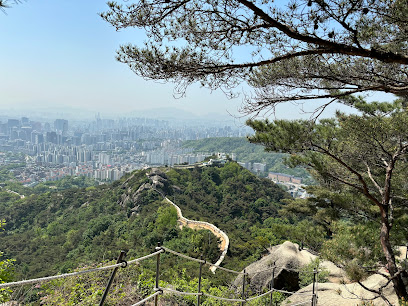
Bongwonsa Temple
0.8 km
Explore the spiritual serenity of Bongwonsa Temple in Seoul, where tranquility meets stunning architecture and cultural heritage.
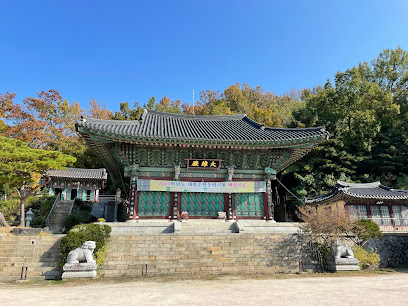
Beombawi Rock
0.8 km
Experience the breathtaking views and serene beauty of Beombawi Rock in Seoul's Jongno District, a must-visit scenic spot for all travelers.

Bongwonsa Bangjiwondo
0.8 km
Explore the tranquil beauty of Bongwonsa Bangjiwondo, a serene garden oasis in the heart of Seoul perfect for relaxation and nature appreciation.
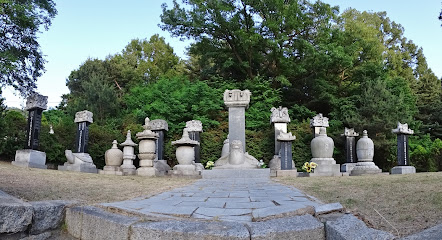
Bongwonsa
0.9 km
Discover serenity and spiritual beauty at Bongwonsa Temple, a peaceful retreat in the heart of Seoul's bustling landscape.
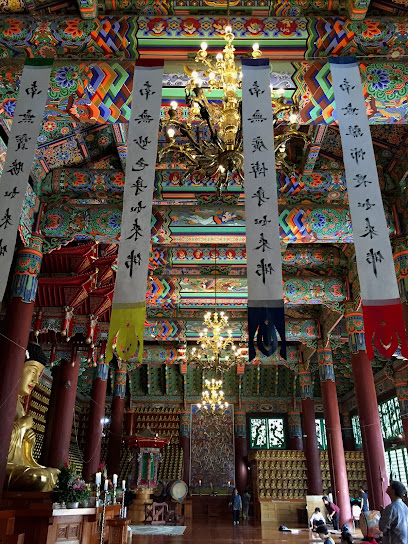
Inwangsan Entrance (Inwangcheon Mineral Spring)
1.0 km
Discover the serene hiking trails and refreshing mineral springs of Inwangsan Entrance in Seoul's Jongno District.
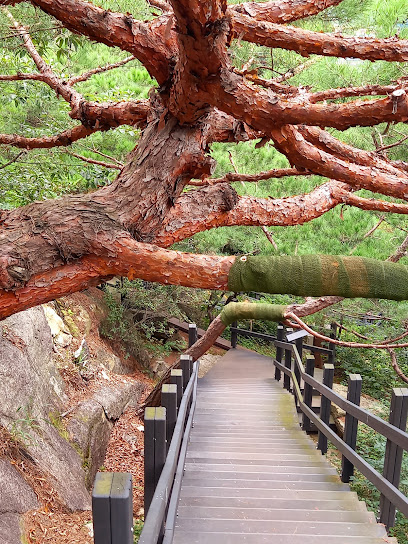
Inwangsan Mountain Park
1.0 km
Explore the natural beauty and cultural heritage of Inwangsan Mountain Park in the heart of Seoul, a must-visit destination for every traveler.
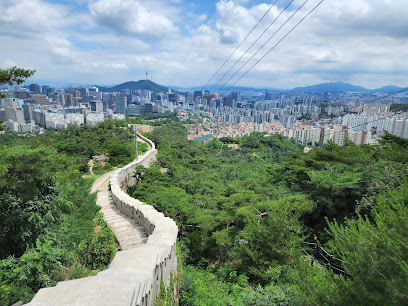
Sajik Park
1.0 km
Experience the serene beauty and rich heritage of Sajik Park, a tranquil oasis in the heart of Seoul's historic Jongno District.
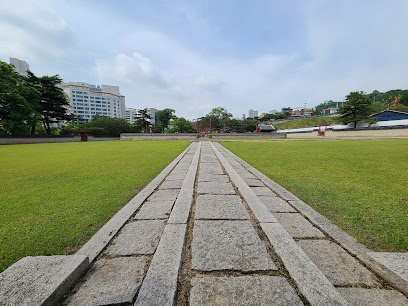
Essential places to dine
Urban Garden
1.4 km
Discover Urban Garden in Seoul – where authentic Italian flavors meet contemporary elegance in a vibrant atmosphere.
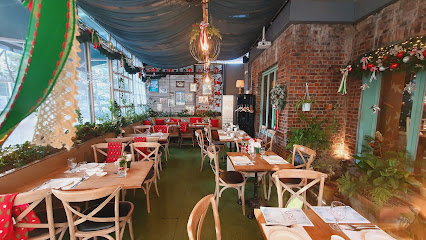
The Market Kitchen
1.8 km
Explore culinary excellence at The Market Kitchen in Seoul with an expansive buffet featuring global flavors and local specialties.
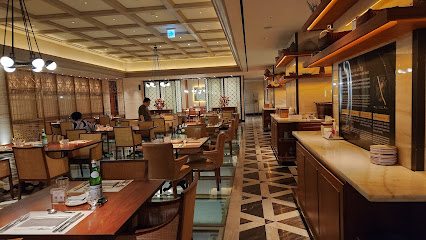
Akira Back
1.8 km
Experience culinary artistry at Akira Back in Seoul – where Canadian flavors meet Korean inspirations in a fine dining setting.
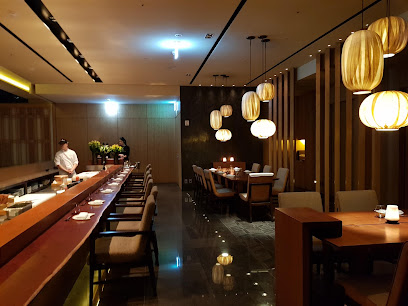
LE CHEF BLEU
2.1 km
Experience the elegance of French fine dining at Le Chef Bleu in Seoul's vibrant Jung-gu district.
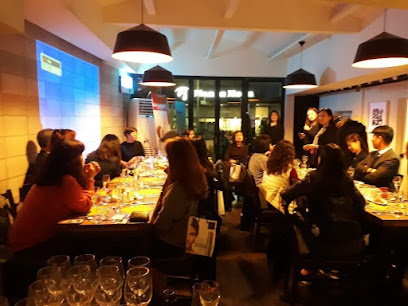
Dugahun
2.2 km
Experience authentic Italian flavors at Dugahun in Jongno District, Seoul – where culinary excellence meets vibrant atmosphere.
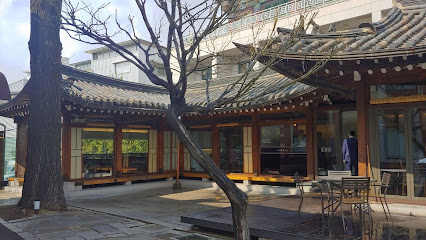
The Restaurant
2.3 km
Experience the perfect fusion of Haute French and Italian cuisine at The Restaurant in Seoul's Jongno District.
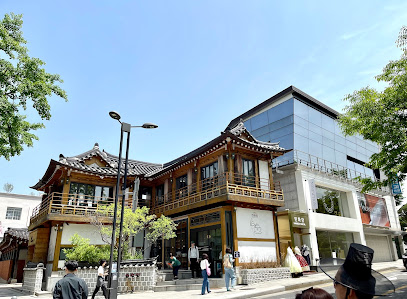
PKM Garden Restaurant & Cafe
2.4 km
Experience the essence of Italy in Seoul at PKM Garden Restaurant & Cafe - where delightful flavors meet serene surroundings.
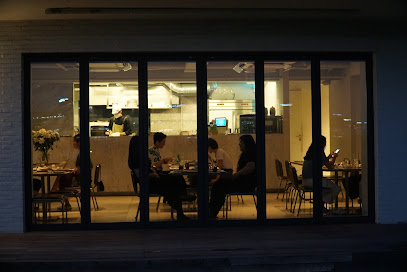
Korean Folk Village
2.4 km
Discover Korea's rich heritage at Korean Folk Village – an open-air museum showcasing traditional life with performances, crafts, and delicious cuisine.
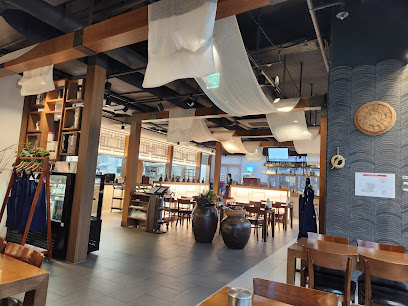
MUGUNGHWA
2.4 km
Experience the best of traditional Korean cuisine at Mugunghwa, where culinary artistry meets breathtaking views in Seoul.
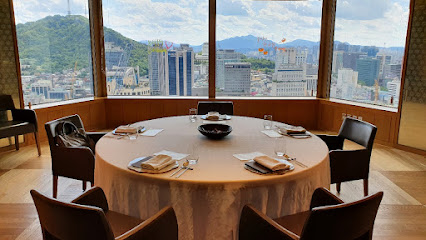
Pierre Gagnaire à Séoul
2.4 km
Savor exquisite haute French cuisine at Pierre Gagnaire à Séoul, where culinary artistry meets breathtaking views in the heart of Korea's vibrant capital.
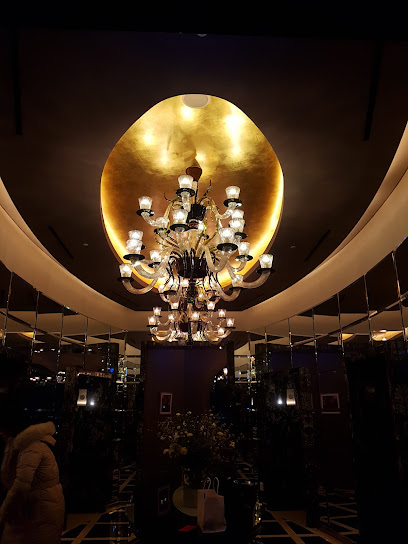
Insadong Geujip
2.5 km
Experience authentic Korean flavors at Insadong Geujip - where tradition meets culinary excellence in Seoul's historic district.
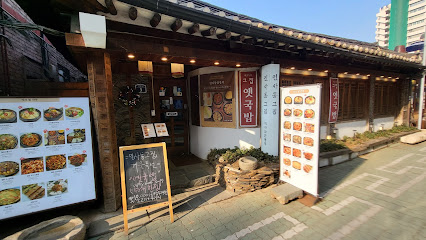
Ha-Yeon Korean Cuisine Restaurant
2.6 km
Savor authentic Korean traditional full-course meals at Ha-Yeon in Jongno-gu, where every dish tells a story.
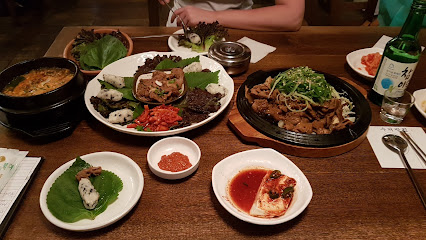
PyeongYang Gogitjip
2.6 km
Experience authentic Korean BBQ at PyeongYang Gogitjip in Jongno District, where flavors meet tradition in every grilled bite.
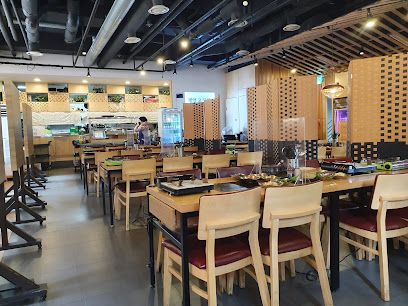
Doma Insadong
2.6 km
Discover authentic Korean flavors at Doma Insadong in Seoul's historic Insadong district – a perfect blend of tradition and taste.
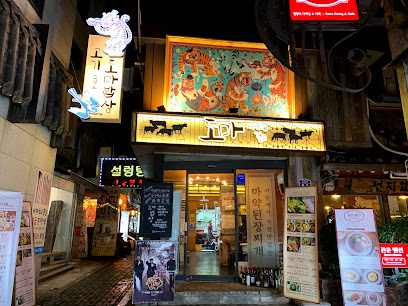
Insadong gukbap
2.6 km
Experience authentic Korean gukbap at Insadong Gukbap in Seoul - where tradition meets flavor in every bowl.
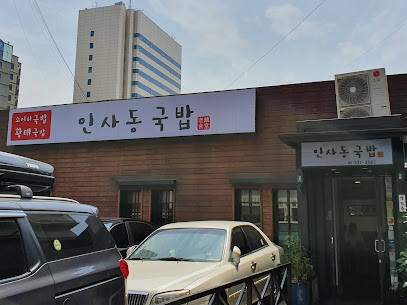
Markets, malls and hidden boutiques
MSK SHOP / Cafe Coin (Manado disk Shop)
1.6 km
Explore the essence of Korean fashion at MSK SHOP / Cafe Coin, where unique styles and exceptional quality meet in the heart of Seoul.
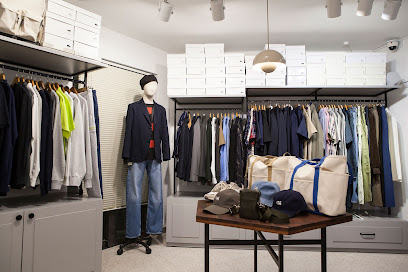
e-바다몰
1.9 km
Discover unique home goods and essentials at e-바다몰, where quality meets style for your living spaces.

Sogong underground Shop #34 (Korean Ginseng Corp)
2.4 km
Explore Sogong Underground Shop #34 for authentic Korean ginseng products, offering health benefits and cultural insights in the heart of Seoul.
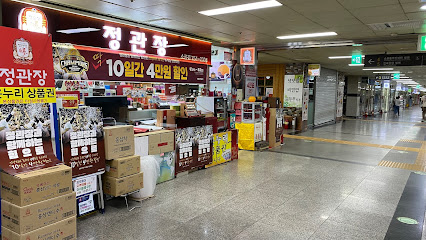
YG Place Insa Branch
2.4 km
Explore the vibrant world of K-pop at YG Place Insa Branch, Seoul's premier music store, offering exclusive merchandise and a taste of Korean music culture.
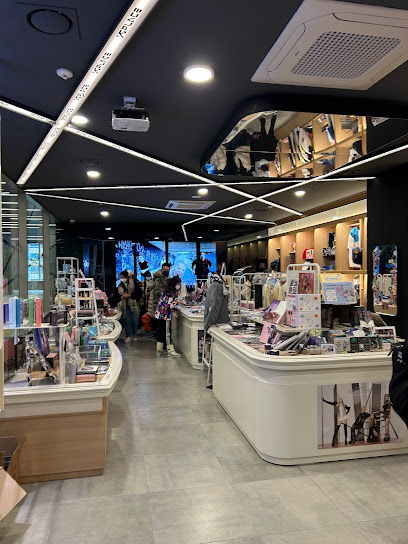
Woo Jeung Nacre lacquer Ware Co. (2-nd floor)
2.4 km
Explore the exquisite craftsmanship of traditional Korean nacre lacquerware at Woo Jeung Nacre Lacquer Ware Co., a gem in Seoul's Jung District.

Seoul shop
2.5 km
Discover the ultimate K-Pop gift shop in Seoul, offering unique merchandise and exclusive collectibles for every fan.
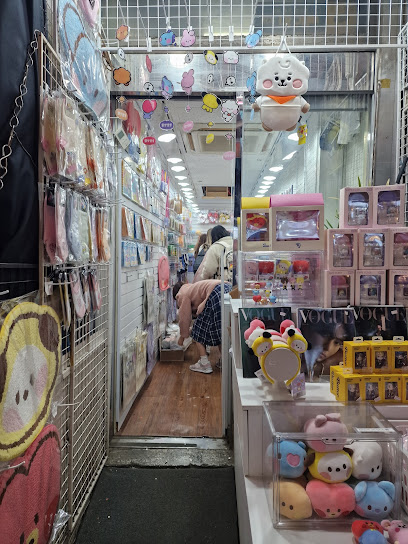
LOTTE DUTY FREE Main Store
2.5 km
Explore the luxurious offerings of LOTTE DUTY FREE Main Store in Seoul, where you can enjoy tax-free shopping on top brands and unique souvenirs.

LOTTE Department Store Main Store
2.5 km
Discover an extraordinary shopping experience at LOTTE Department Store Main Store, where luxury brands and local treasures await in the heart of Seoul.
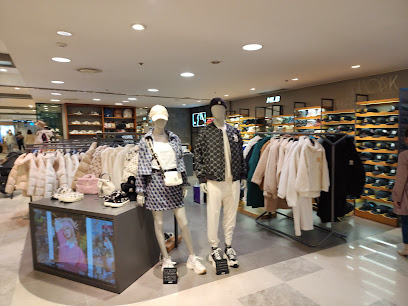
Piaget Boutique Seoul - Lotte Myeong-dong DF
2.5 km
Discover the luxury of Piaget Boutique in Myeong-dong, where exquisite jewelry and fine watches await in a stunning shopping destination.
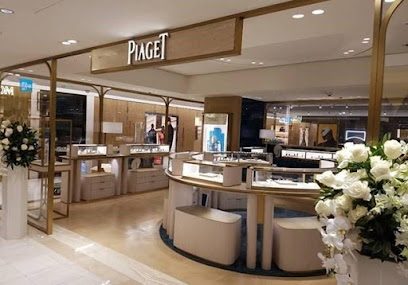
세령 (Korean HandMade Highclass Traditional Accessory)
2.5 km
Discover 세령: Your Destination for Exquisite Handmade Traditional Accessories in Seoul, Celebrating Korean Artistry and Culture.
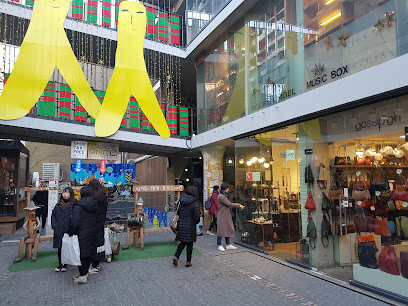
Kukje Embroidery
2.5 km
Discover the artistry of Korean embroidery at Kukje Embroidery, a unique gift shop in the heart of Seoul's Insa-dong district.
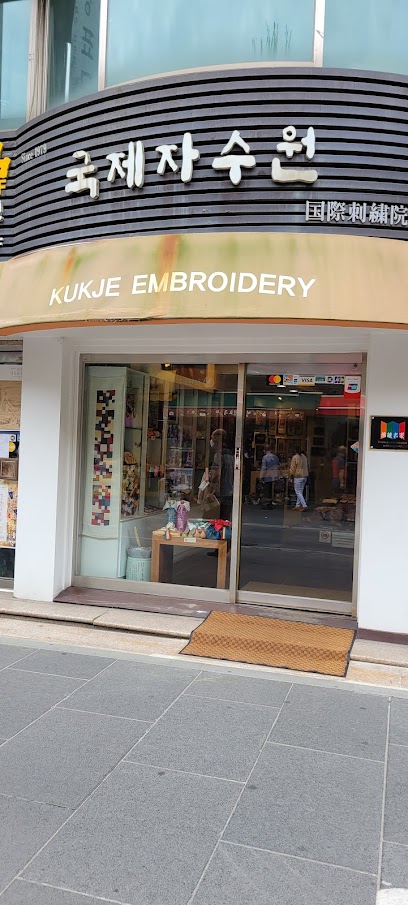
Moony Gongbang Music Box (무늬공방 도자기 오르골)
2.5 km
Discover the magic of handcrafted music boxes at Moony Gongbang in Seoul's Jongno District, where melodies and memories intertwine beautifully.
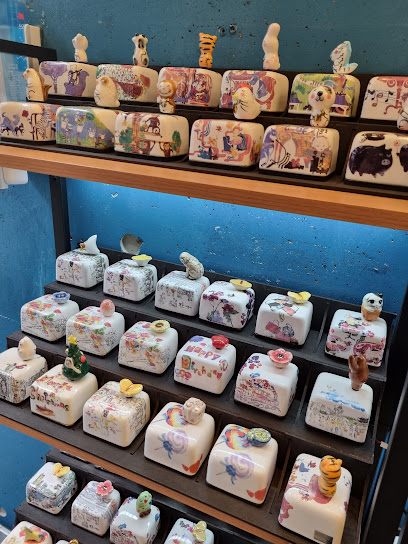
Ssamziegil
2.5 km
Explore the artistic heart of Seoul at Ssamziegil, where traditional crafts meet modern shopping in a vibrant cultural hub.
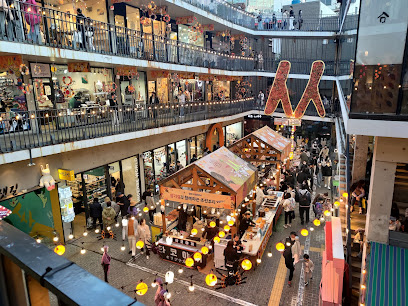
Etro Boutique
2.5 km
Discover the elegance of Italian fashion with unique prints and luxurious fabrics at Etro Boutique in Seoul, a must-visit for style enthusiasts.

Object
2.6 km
Explore a charming souvenir store in Jongno District, Seoul, offering unique gifts and local crafts that reflect Korea's rich culture and heritage.
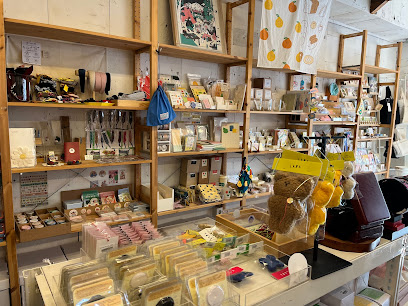
Essential bars & hidden hideouts
Cobbler
1.3 km
Experience the art of mixology at Cobbler, a premier cocktail bar in Seoul's Jongno District, where creativity and flavor intertwine.
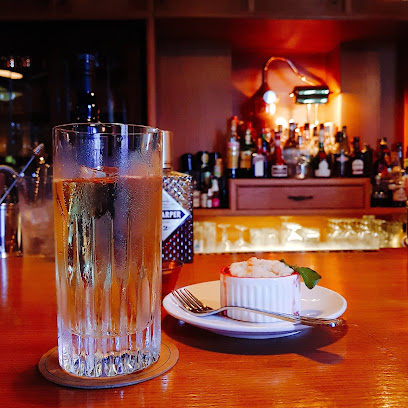
Tender Bar
1.3 km
Experience Seoul's nightlife at Tender Bar, a cocktail haven offering expertly crafted drinks and a vibrant atmosphere in Jongno District.
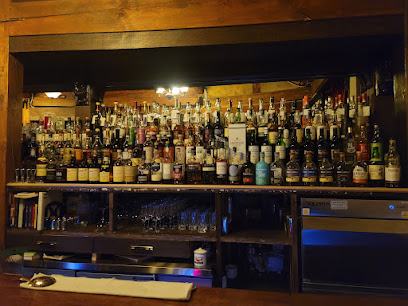
Bar Cham
1.4 km
Experience the art of mixology at Bar Cham, a cozy cocktail bar in Seoul's Jongno District, offering unique drinks and a warm ambiance.
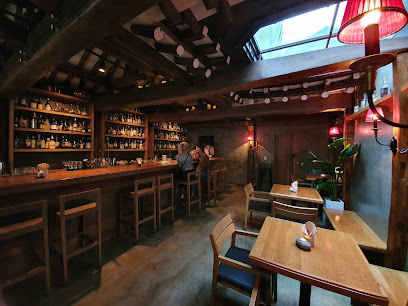
Bar Pomme
1.4 km
Discover the exquisite cocktails and vibrant atmosphere at Bar Pomme, a must-visit cocktail bar in Seoul's Jongno District.
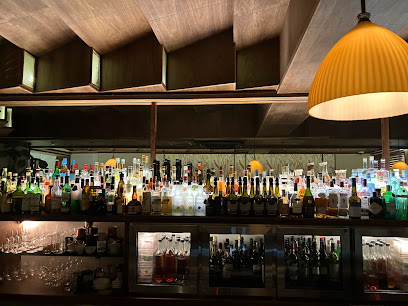
찰스 H Charles H.
1.8 km
Discover the perfect blend of elegance and modernity at Charles H. in Seoul, a sophisticated bar and dining experience.
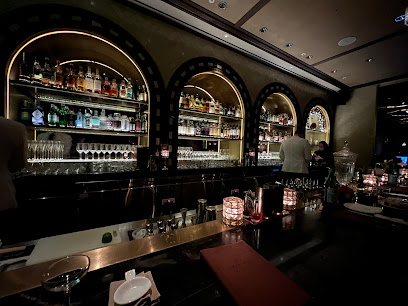
I Love Pub
2.3 km
Experience the vibrant nightlife at I Love Pub in Jung-gu, Seoul, where friendly service meets a lively atmosphere and delicious drinks.

Ghiwon22
2.4 km
Discover Ghiwon22: A chic cocktail bar in Myeong-dong, blending local Korean flavors with innovative drinks in a vibrant atmosphere.
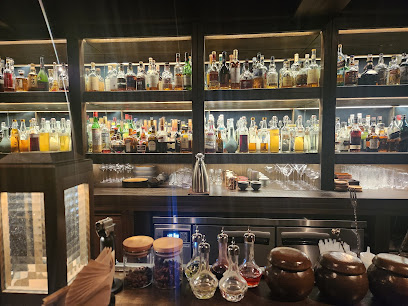
Pierres Bar
2.4 km
Experience the luxury of Pierres Bar in Seoul, where exquisite cocktails meet breathtaking skyline views in an elegant setting.
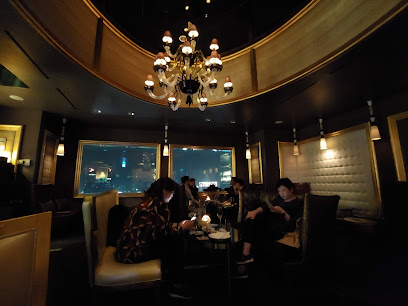
The Drawing Room
2.4 km
Experience the elegance of The Drawing Room, a premier cocktail bar at Lotte Hotel, where exquisite drinks and a sophisticated atmosphere await.
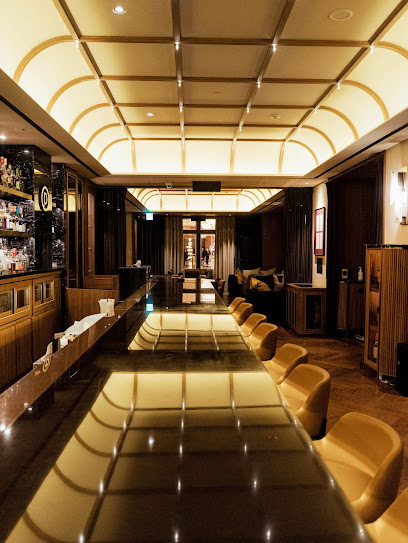
OB's Cabin
2.5 km
Experience the vibrant nightlife of Seoul at OB's Cabin, a live music bar where local talent shines in an intimate setting.
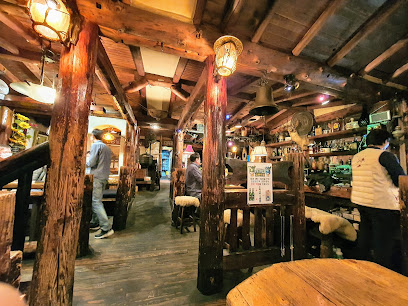
마당쇠호프
2.5 km
Discover the local charm of Seoul at 마당쇠호프, a popular bar in Insa-dong offering delicious drinks and a vibrant social atmosphere.
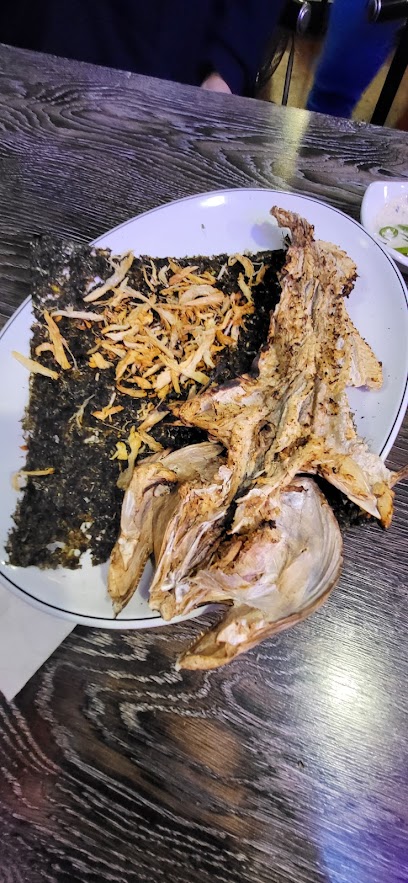
Tongkeun Imo
2.6 km
Discover the lively essence of Seoul's nightlife at Tongkeun Imo, a cozy bar in Insa-dong offering unique local drinks and a welcoming atmosphere.
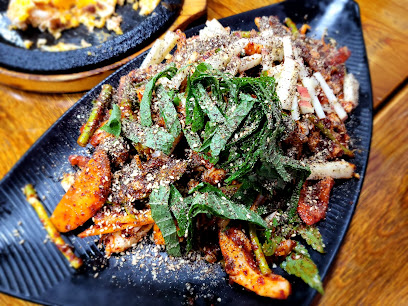
Seochon Dokkaebi
2.6 km
Discover Seochon Dokkaebi, a vibrant bar in Seoul that blends traditional Korean culture with modern nightlife, perfect for an unforgettable experience.
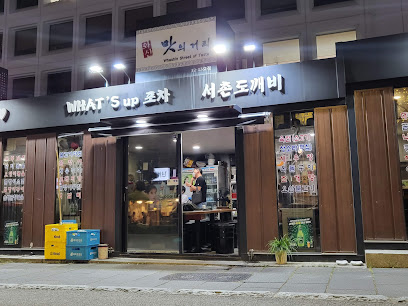
Tou
2.6 km
Experience the authentic taste of Korea at Tou, a Korean rice wine pub in Jongno District, where culture and flavor come alive.

Marque d'Amour
2.6 km
Experience Seoul's nightlife at Marque d'Amour, where expertly crafted cocktails meet a vibrant and inviting atmosphere.




